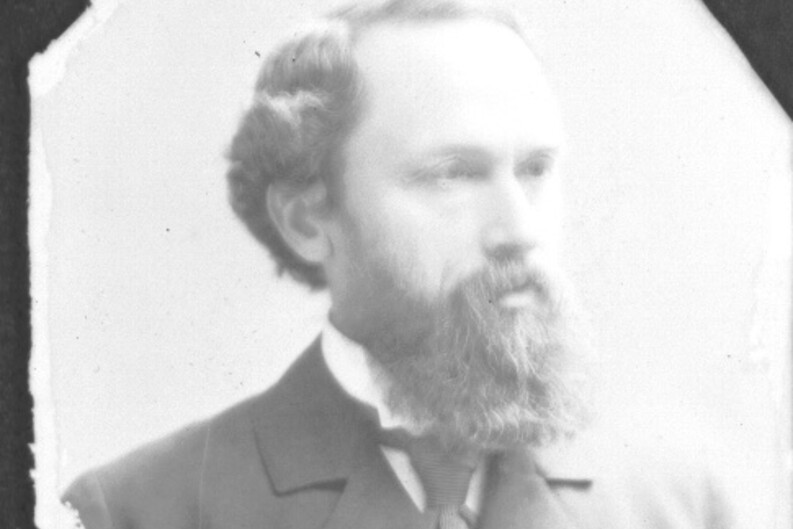Historical Profile: Simeon E. Baldwin


Shortly after the end of the Civil War, Yale Law School was struggling with a shortage of faculty, students, and funding. Faced with the possibility of having to shut its doors, three New Haven lawyers stepped in to bring the School back from the brink of closure. Simeon E. Baldwin, along with William C. Robinson and Johnson T. Platt, would be instrumental in securing the Law School’s future.
Born in New Haven in 1840, Baldwin graduated from Yale College in 1861 and went on to study at the Law School from 1861 to 1862. Though no longer standing, the home he lived in for 50 years was located on Wall Street — the current home of Yale Law School.
Baldwin began teaching at the Law School in 1869, specializing in constitutional and mercantile law, corporations, and wills. He joined fellow New Haven lawyers Robinson and Platt and together, they carried the School through a dangerously uncertain period of its history. His career as a prominent railroad lawyer afforded him the ability to serve as the School’s longtime treasurer and benefactor, which ultimately ensured its survival.
Baldwin taught at the Law School for 50 years and witnessed many institutional changes during his tenure. The School made two major moves, first to the New Haven County Courthouse in 1873 and then to Hendrie Hall in 1895. During Baldwin’s tenure the institution of an interdisciplinary approach to legal education was in its early beginnings and became a core tenet of the School’s approach. Other milestones included the establishment of the Yale Law Journal in 1891 and the School’s first Black and female graduates receiving their degrees in 1880 and 1886, respectively. For Baldwin, the Law School was “a large part of [his] life, almost [his] child.”
In addition to being a legal scholar, Baldwin held several prominent government positions in the later years of his life. He served as the governor of Connecticut from 1911 to 1915, a position his father had held from 1844 to 1846. Connecticut’s first five governors also had familial ties to Baldwin. After serving two terms, Baldwin was appointed as a justice and then chief justice of the Connecticut Supreme Court. He also played a key role in founding the American Bar Association in 1878 and was the president of the Association of American Law Schools, the American Social Science Association, the American Political Science Association, the American International Law Association, and the American Historical Association.
“Baldwin became something of a guardian angel for the Yale Law School over the next half century, serving initially as rescuer, then as professor, administrator, and benefactor,” said Sterling Professor Emeritus of Law and Legal History John H. Langbein in History of the Yale Law School: The Tercentennial Lectures.
Baldwin died in 1927 and is buried in New Haven’s Grove Street Cemetery, in the shadow of the Sterling Law Building. The Center for the Study of Corporate Law at Yale Law School honors his legacy with the Simeon E. Baldwin Award, given each year to a graduate or faculty member for distinguished achievement in law and business.


